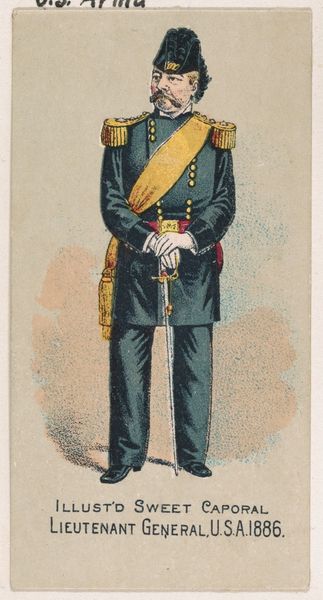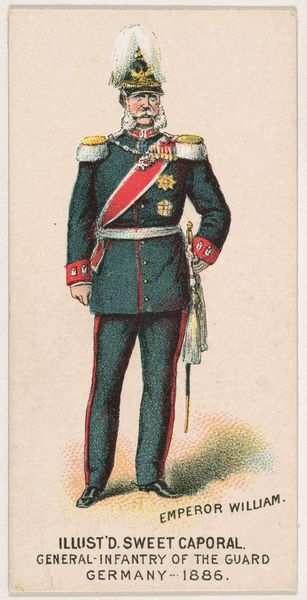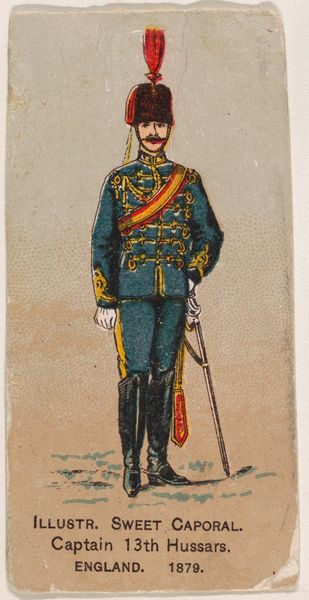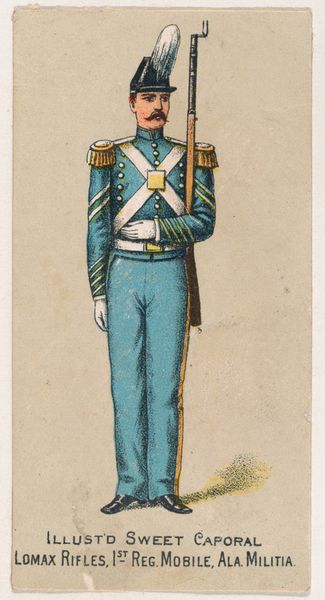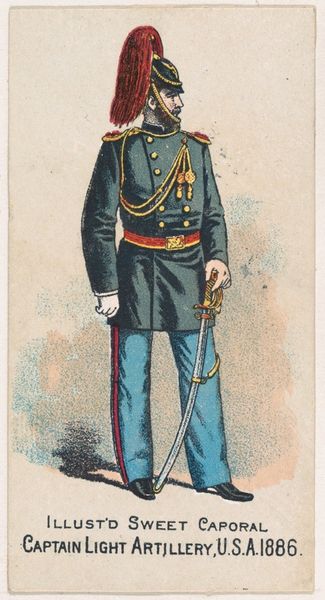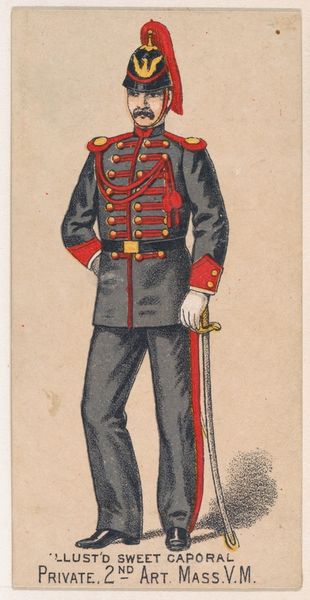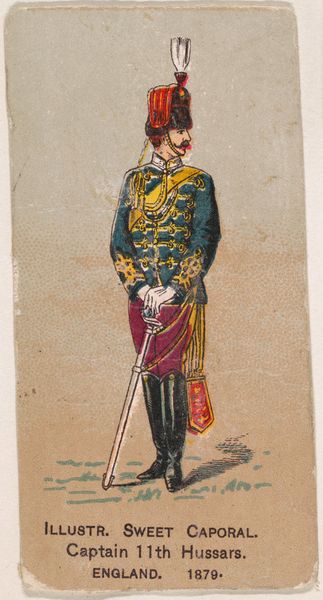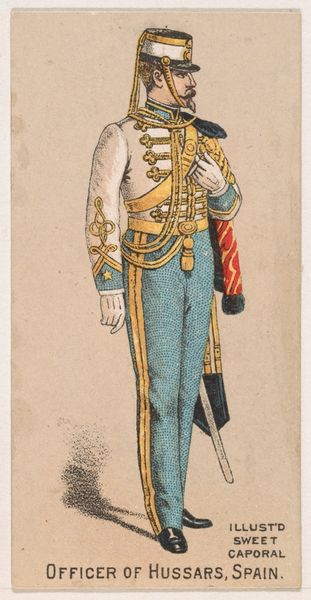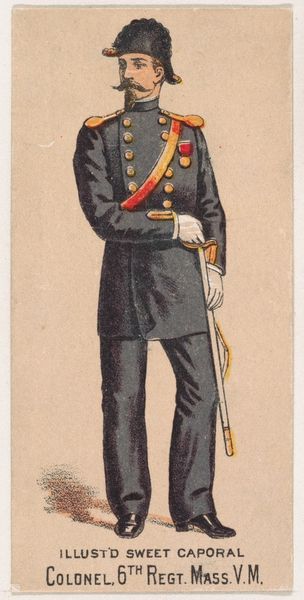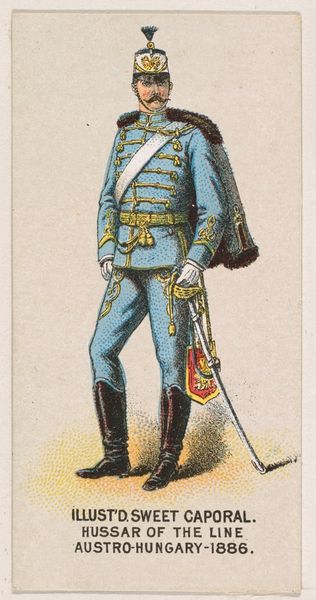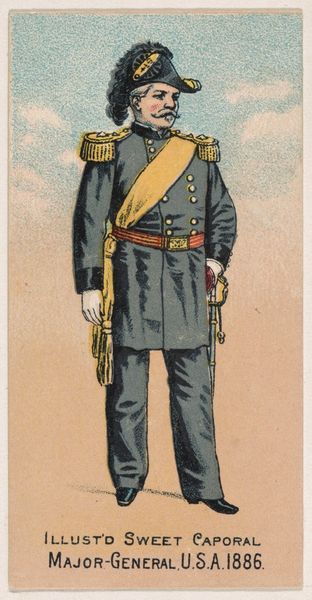
lithograph, print
#
portrait
#
lithograph
# print
#
caricature
#
caricature
#
historical photography
#
historical fashion
#
history-painting
Dimensions: height 415 mm, width 280 mm
Copyright: Rijks Museum: Open Domain
Curator: What strikes me immediately is the almost comical rigidity of the figure. It's striking. Editor: Indeed. What we're looking at is a lithograph from the late 19th century, sometime between 1869 and 1888, by J.H. van Wees II. The piece is titled “Z.M. Willem III, Koning der Nederlanden,” or, "His Majesty Willem III, King of the Netherlands". It’s a portrait, but with an undeniable touch of caricature, don't you think? Curator: Absolutely, the symbols of power are piled high. That orange sash cuts a bold diagonal across his chest, leading to that heavy sword—classic signifiers, yet somehow exaggerated. It makes me consider how deeply costume is connected to societal expectation, particularly around masculinity and authority. He seems burdened by the weight of the crown, metaphorically speaking, even if it's not physically present. Editor: Note also that distinctive uniform and its symbolic connection to the House of Orange. This visual language creates continuity, projecting an image of power that harkens back to a specific lineage and history of the Dutch monarchy. That pale background accentuates his figure. There’s almost an ethereal quality, an attempt perhaps to lift him above the everyday. Curator: Perhaps, but it could also be seen as highlighting his isolation. Consider the political climate of the time – the rise of republicanism, the questioning of inherited power. This portrait, with its reliance on tradition, could be interpreted as a defensive posture against those challenges, it attempts to legitimize a certain order of power, yet by its very creation it acknowledges this questioning. Editor: Interesting thought! It might also reveal the way the King wanted to be perceived, and even further than that, how he wanted his power to translate symbolically through imagery. We're left contemplating how symbols become potent tools for maintaining cultural memory and royal authority, both then and now. Curator: Precisely! It urges us to question whose story is being told and whose interests are being served by this carefully constructed image. Editor: This really draws out that continuous relationship between symbols, culture and authority through time. Thanks for illuminating that!
Comments
No comments
Be the first to comment and join the conversation on the ultimate creative platform.
